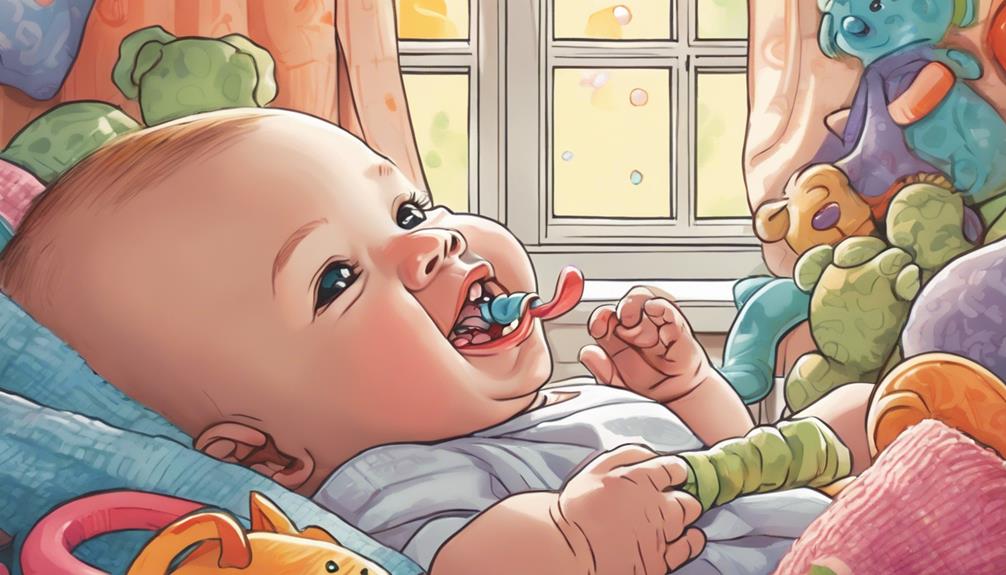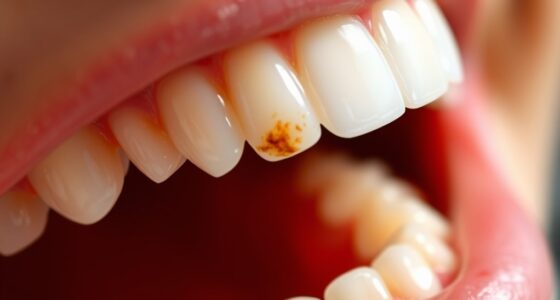Babies usually start teething around 6 months, though some begin as early as 3 months or as late as 12 months. The first teeth to come in are typically the lower central incisors, followed by the upper ones a few weeks later. By age 2.5 to 3 years, they usually have all 20 primary teeth. Teething can last until the last baby tooth erupts, and symptoms like fussiness and drooling are common. To help, you can use safe teething toys and chilled rings. There's much more to discover about this process, so keep exploring for tips and advice!
Key Takeaways
- Babies typically start teething around 6 months, but some may begin as early as 3 months or as late as 12 months.
- The first teeth usually appear as lower central incisors, followed by upper central incisors about 4 to 8 weeks later.
- Most children have a full set of 20 primary teeth by 2.5 to 3 years of age.
- Teething symptoms include fussiness, drooling, and disrupted sleep patterns, lasting for several months during tooth eruption.
Teething Timeline
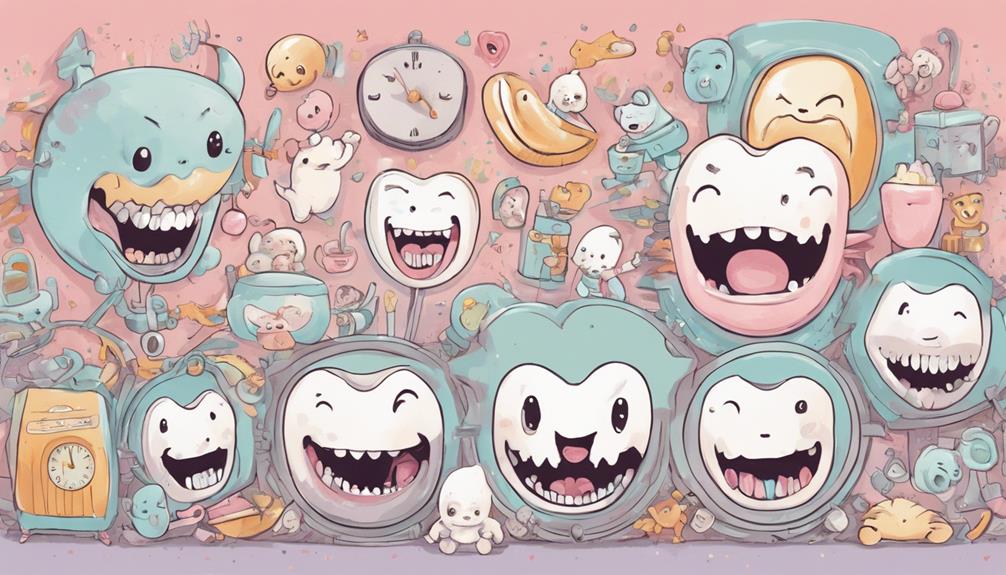
Most babies start teething around 6 months, but some may begin as early as 3 months or as late as 12 months. The process of teething can be uncomfortable for babies, as their first set of teeth, also known as primary or baby teeth, start to break through the gums. This can cause irritation and lead to symptoms such as drooling, crankiness, and trouble sleeping. It is important for parents to be aware of the typical baby teeth timeline and to provide soothing remedies, such as teething toys or gentle massages, to help alleviate their baby’s discomfort during this stage.
You'll likely notice your little one's first teeth appear in the form of the lower central incisors, typically followed by the upper central incisors about 4 to 8 weeks later. This teething timeline can vary considerably, so don't be alarmed if your baby doesn't have any teeth by their first birthday. It's usually not a cause for concern unless it extends beyond 18 months.
As your baby grows, they'll eventually have a full set of 20 primary teeth by about 2.5 to 3 years of age. During this period, you might see various teething symptoms, like fussiness or drooling, which can indicate tooth eruption.
Remember to keep an eye on your baby's dental health to prevent tooth decay. Regular visits to a pediatric dentist can help monitor your child's tooth development and guarantee everything's on track.
Staying informed about the teething timeline can ease your worries and make this process smoother for both you and your baby.
Number of Teeth by Age

Understanding how many teeth your child should have by age can help you track their dental development effectively. Typically, you can estimate the number of teeth by using the formula: age in months minus 6, which applies until they reach 2 years old.
- A 1-year-old usually has about 6 teeth.
- By 2.5 to 3 years, they should have a complete set of 20 primary teeth.
Regular dental check-ups are crucial to monitor your child's tooth health and guarantee proper development. These visits can help catch any potential issues early on, so you can address them promptly.
Remember, while these milestones provide a guideline, every child is unique. If you have concerns about your baby's teeth or overall dental health, consult your pediatric dentist for personalized advice.
Keeping track of your child's dental development will set them up for a lifetime of healthy smiles!
Signs of Teething
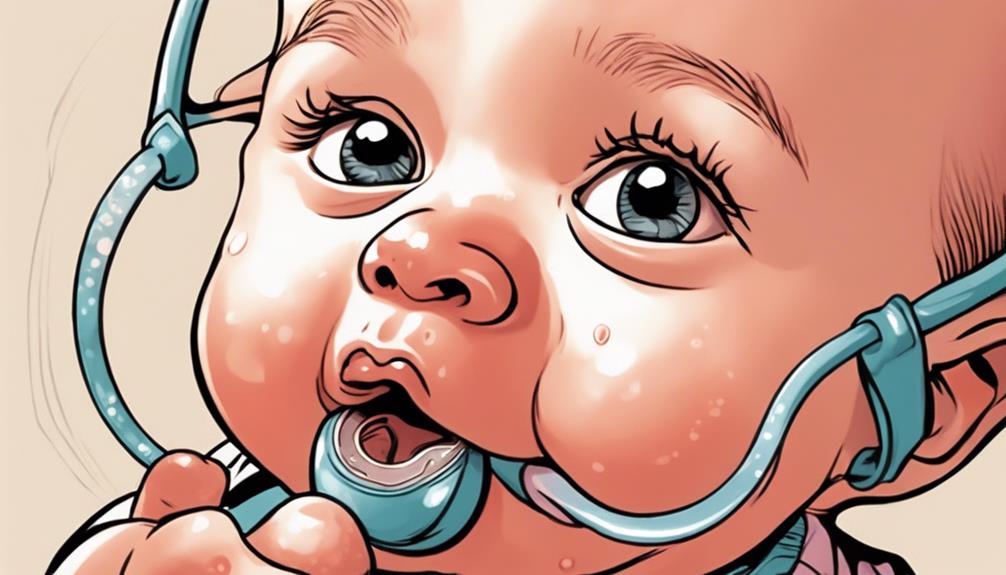
Teething can be a challenging time for both you and your baby, as it often brings a variety of noticeable signs. You might notice that your baby's gums are swollen and tender, making them irritable and uncomfortable. Here are some common signs of teething to watch for:
| Signs of Teething | Description |
|---|---|
| Drooling | Increased saliva production leading to wetness around the mouth. |
| Chewing | A strong desire to chew on objects, including toys and your fingers. |
| Disrupted Sleep | Changes in sleep patterns due to discomfort and irritability. |
In addition to these signs, your baby may experience a slight elevation in temperature, but if it exceeds 38°C, it's best to consult your pediatrician. You might also notice changes in your baby's eating habits; they could refuse food or, conversely, eat more as they seek relief from teething discomfort. Understanding these signs of teething can help you support your little one as they work towards getting their first tooth.
Teething Relief Strategies
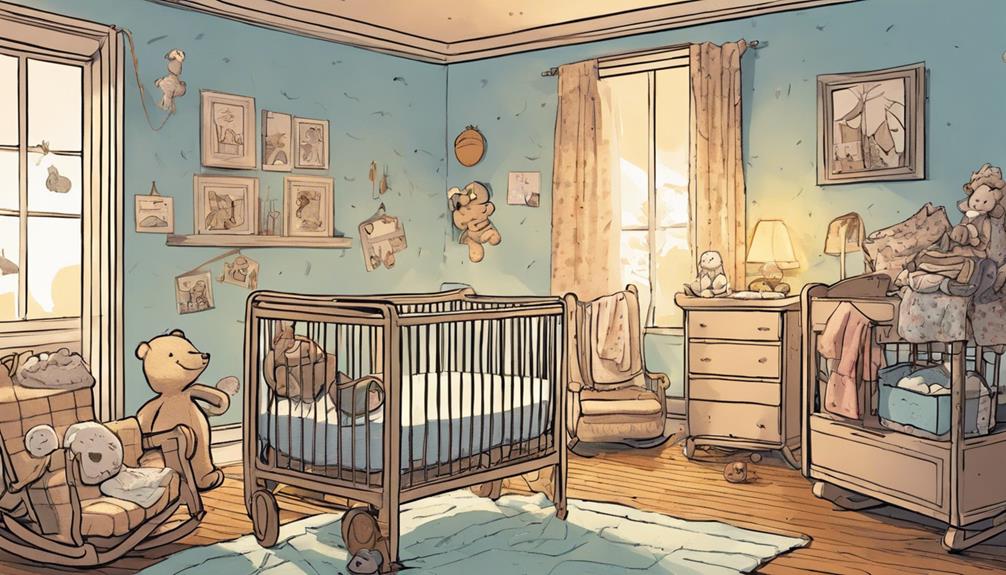
Finding effective teething relief strategies can make a significant difference in your baby's comfort during this challenging phase. As your little one navigates the teething stages, consider these helpful options:
- Teething toys: Made of silicone or rubber, these can provide comfort and distraction while helping to soothe sore gums.
- Chilled teething rings: A great option, these can numb the gums and offer relief from discomfort. You can also use frozen washcloths for a similar effect.
It's essential to offer safe chewable items, ensuring they're appropriate for your baby's age and free from small parts to avoid choking hazards.
As you watch your baby, pay attention to their responses to different strategies, adjusting as necessary.
By implementing these teething relief strategies, you'll help maintain your baby's oral health and comfort during this tough time.
Dental Care for Infants
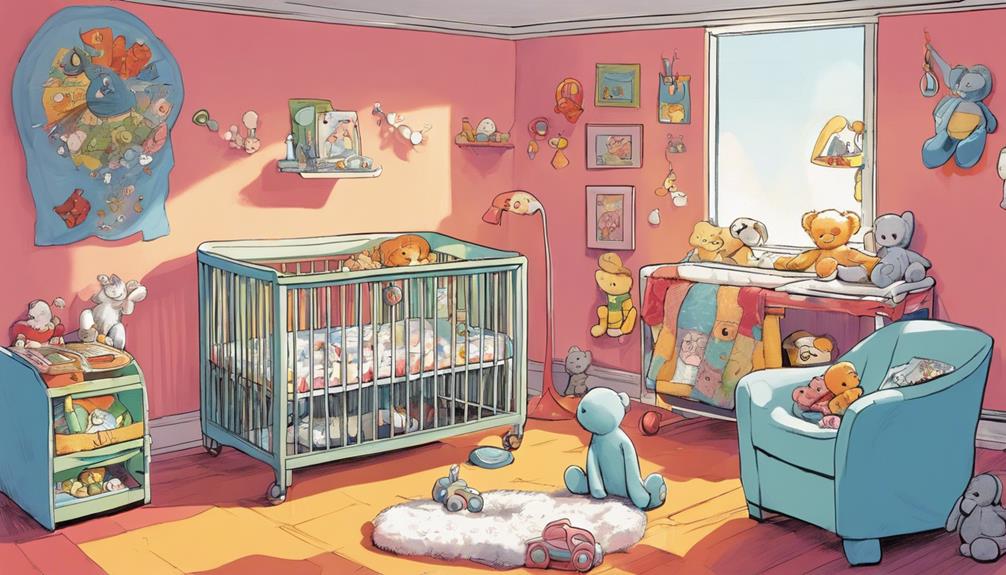
Once your baby's first tooth appears, it's time to focus on establishing a dental care routine that sets the foundation for a lifetime of good oral health. Before teeth start emerging, gently wipe your baby's gums with a clean, damp cloth daily.
Once that first tooth appears, introduce a soft-bristled toothbrush with a tiny amount of fluoridated toothpaste. Establish a brushing routine of at least twice a day, ideally after meals, to promote good oral hygiene. This early practice helps keep those milk teeth healthy and sets the stage for strong permanent teeth later on.
If your baby experiences sore gums during teething, teething rings can provide relief as you continue to care for their dental health. Don't forget to schedule your baby's first dental visit by their first birthday or within six months after the first tooth erupts. This visit guarantees proper monitoring of their dental health.
Frequently Asked Questions
How Long Does Baby Teething Last?
Teething can last about a week for each tooth. You'll notice discomfort starting a few days before eruption and lingering a bit afterward, especially if multiple teeth come in close together.
What Stage of Teething Hurts the Most?
The stage that hurts the most is when teeth break through the gums. You'll notice visible gum swelling and splitting, leading to increased irritability and discomfort, especially during molar eruptions, which tend to be more painful.
How Long Once a Tooth Breaks Through?
Once a tooth breaks through, it's like a small victory. It'll still take some time for that tooth to settle fully, usually a few weeks, so be ready for a little extra fussiness.
What Is the Timeline for Baby Teeth?
You can expect your baby's teething timeline to start around 4 to 7 months. Typically, they'll have a full set of 20 primary teeth by age 3, though individual experiences may vary considerably. Starting oral care for infants is important as soon as their first tooth appears. This can include gently wiping their gums with a damp cloth after feedings and introducing a soft-bristled toothbrush when they have a few teeth. It’s essential to start good oral hygiene habits early to help prevent tooth decay and promote a lifetime of healthy teeth.
Conclusion
In your baby's teething journey, remember that patience is key, comfort is vital, and care is essential.
As those tiny teeth emerge, you'll witness changes, challenges, and growth.
By understanding the timeline, recognizing the signs, and employing effective relief strategies, you can make this phase smoother for both of you.
So, embrace the process, celebrate each milestone, and maintain dental hygiene.
With love and attention, you're setting the foundation for a healthy smile that lasts a lifetime.
